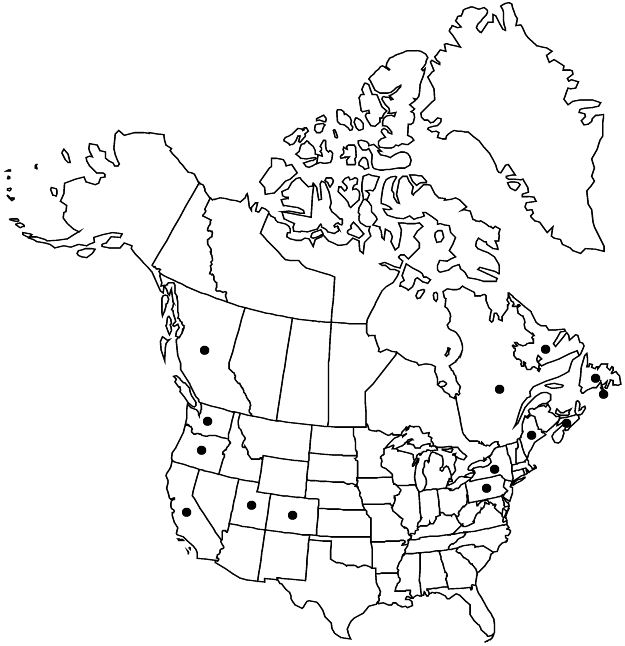Potentilla anglica
Veg. Europ. 1: 475. 1790.
Rootstocks ± erect, stout to slender, 1–4 cm. Stems soon becoming prostrate, ± flagelliform, usually openly branched, eventually rooting at some nodes, (0.3–)1.5–7+ dm. Basal leaves ± persistent, ternate or palmate, 2–10(–12) cm; petiole 1–7(–8) cm, long hairs sparse to abundant, appressed, 0.5–1 mm, stiff, glands absent; leaflets 3–5, central ± obovate to cuneate, 1–3(–3.5) × 0.8–2(–2.5) cm, distal ± 1/2 of margin incised 1/4–1/3(–1/2) to midvein, teeth 2–4 per side, surfaces similar, green, sparsely to moderately hairy. Cauline leaves 2–3(–4) proximal to 1st flowering or branching node, usually well expanded at anthesis, usually ternate, 2–6(–10) cm; petiole 0.3–4(–8) cm; leaflets (3–)5, ± resembling or narrower than those of basal leaves, narrowly cuneate, 1–2(–3.5) × 0.8–2(–2.5) cm, apex rounded to obtuse. Inflorescences solitary flowers at stolon nodes. Pedicels (1–)3–10(–17) cm. Flowers 4(–5)-merous; epicalyx bractlets narrowly elliptic to oblong or ovate, 3–4(–7) × 1–1.5 mm, smaller than to slightly larger than sepals; hypanthium 2–4 mm diam.; sepals (3–)4–6 mm, apex broadly acute or acuminate; petals 6–9 × 5–9 mm, apex ± retuse; stamens 15–20, filaments 0.8–1.2 mm, anthers 0.8–1.2 mm; carpels 20–50, styles 0.9–1.5 mm. Achenes 1–1.5(–1.8) mm, ± smooth. 2n = 28, 56 (Europe).
Phenology: Flowering May–Aug(–Nov).
Habitat: Moist flats and slopes, mainly on acidic soil
Elevation: 0–1200 m
Distribution

Introduced; St. Pierre and Miquelon, B.C., Nfld. and Labr., N.S., Que., Calif., Colo., Maine, N.Y., Oreg., Pa., Utah, Wash., Europe, introduced also in Atlantic Islands (Azores, Madeira), Pacific Islands (New Zealand), Australia.
Discussion
Potentilla anglica apparently is a product of hybridization involving P. erecta and P. reptans (B. Matfield and J. R. Ellis 1972) that has become stabilized and distinct from both parents. In Europe, it forms back-cross hybrids with both P. erecta (P. ×suberecta Zimmeter) and P. reptans (P. ×mixta Nolte); these hybrids are not known from North America. A garden hybrid supposedly between P. anglica and P. nepalensis Hooker (known as P. ×tonguei Mallett) was found in Allegany State Park, New York, but this was likely cultivated rather than naturalized.
Potentilla anglica probably was introduced even in Newfoundland (A. Kurtto et al. in J. Jalas et al. 1972+, vol. 13), contrary to the view expressed by M. L. Fernald (1950).
The name Potentilla procumbens Sibthorp was previously used for this species; that is a superfluous and illegitimate name.
Selected References
None.